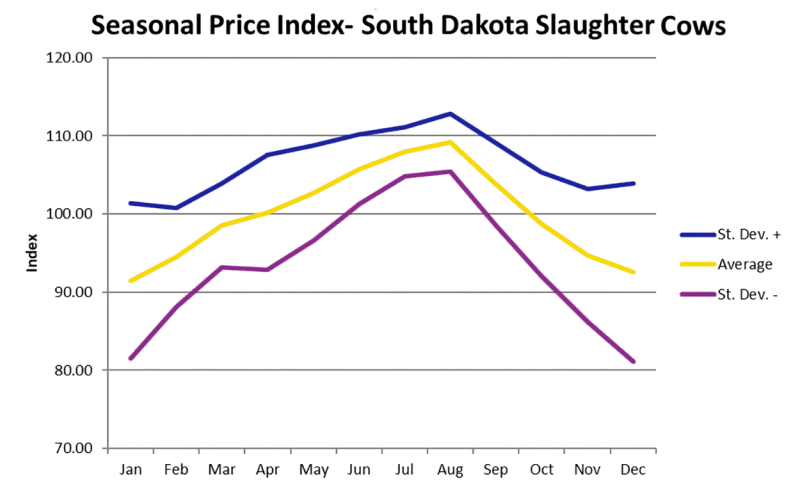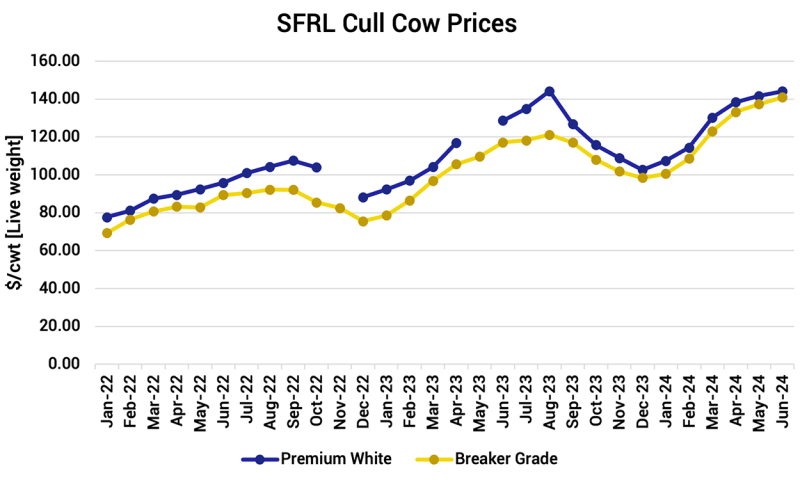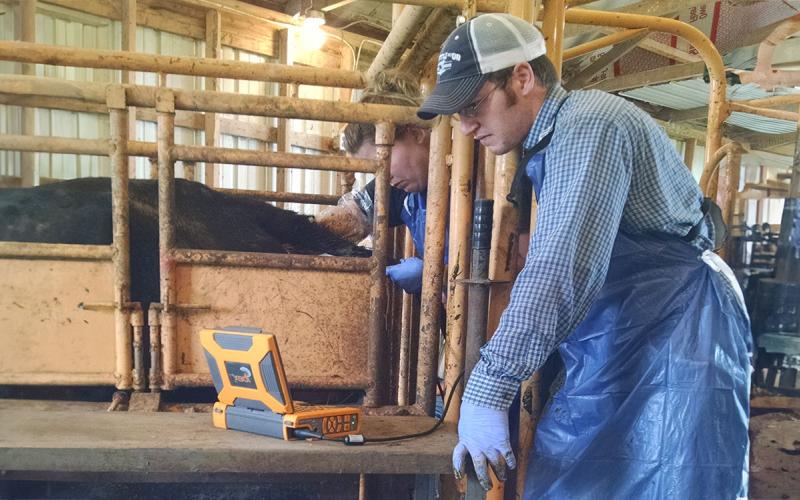Pregnancy detection is a tool that producers can use to manage cow herd expenses. An open cow continues to incur feed and health expenses until they are marketed. Early pregnancy diagnosis may increase profitability if open cows can be culled earlier.
Spring calving herds (January through April) can have pregnancy status determined as early as late August, which indicates the open animals that could be sold. The seasonal price index shows that the highest cull cow prices are received in August and decline from there (Figure 1).

Management Alternatives
There are a variety of alternatives for managing such cows, including the following.
- Cull cow prices rapidly decline from August through January, so selling non-pregnant cows earlier provides better prices and greater income.
- Declining forage quality in August and September results in weight loss for cows, especially for females that still have a nursing calf. However, early weaning their calves and selling the cow may be the most-profitable option. Cows typically weigh more in August than October and November, and calves at this age will often gain sufficiently on pasture with supplemental feed for adequate protein.
- Rebreeding non-pregnant cows for fall calving herds. The “new” breeding season would be November to January; however, these females will continue to incur expenses until sold. Not all open females should be kept around for a fall herd. Young cows (3 to 6 years old) with good confirmation, udders, and body condition scores are the best candidates. Late spring calvers may have just not conceived due to the length of the breeding season and have nothing to do with fertility, making these females good candidates to retain.
- Feeding cull cows to move them from yellow to white fat. Feed trial data suggest that it takes between 70 and 90 days to change yellow fat to white fat. Most feedlots target at least 90 days on a high grain finishing diet. Cows selected for this option should be sound and healthy and in thin to moderate condition. Gain during this period should be expected in excess of 3.0 pounds per day depending on the ration. While the increase in price for white fat animals is certainly appealing, feeding culled cows does not result in an automatic profit.
Market Data

Market data is sporadic related to feeding cull cows to target the premium white [fat] grade. The national direct market has daily and weekly data with premium white and other grades of cows. The largest volumes at the national level are for cows sold on a dressed basis. For cows sold on a live basis, those grading premium white typically weigh 120 pounds more than those grading as breakers. The difference in dressed weights is typically 130 pounds of carcass weight more for those grading premium white. The price series for different grades is generally represented well at the national level. At the local level in South Dakota, only SFRL has AMS-reported sales with cull cows. The weekly series of premium white prices is very spotty. Most months have some premium white and breaker prices (Figure 2). The price difference is often or typically 5 percent higher for premium white versus breaker grade cows. In addition, the dressing percentage for a premium white is typically 53 to 55% and that of a breaker is 48 to 51% (source). Thus, a premium white will be more pounds sold at a higher price.
Given the current stage of the cattle cycle, demand for productive females is expected to remain strong. If a producer is trying to expand, it may be reasonable to not cull all open females. If the odds are good that an open cow could produce additional calves, it may be profitable to maintain the cow until the normal breeding time next year. The maintenance costs for the cow would be feed and other operating costs. The Economic Research Service (abbreviated as ERS) has cow-calf production costs based on parameters from 2018 USDA ERS - Commodity Costs and Returns. Since then, feed costs have increased, and in recent years costs have been sharply higher for fuel and interest. Feed costs have moderated. Operating costs would also have to be incurred on developing a replacement heifer.
Additional Resources
- Understanding dressing percentage of slaughter cattle, Government of Alberta.
- Commodity Costs and Returns, USDA Economic Research Service.
